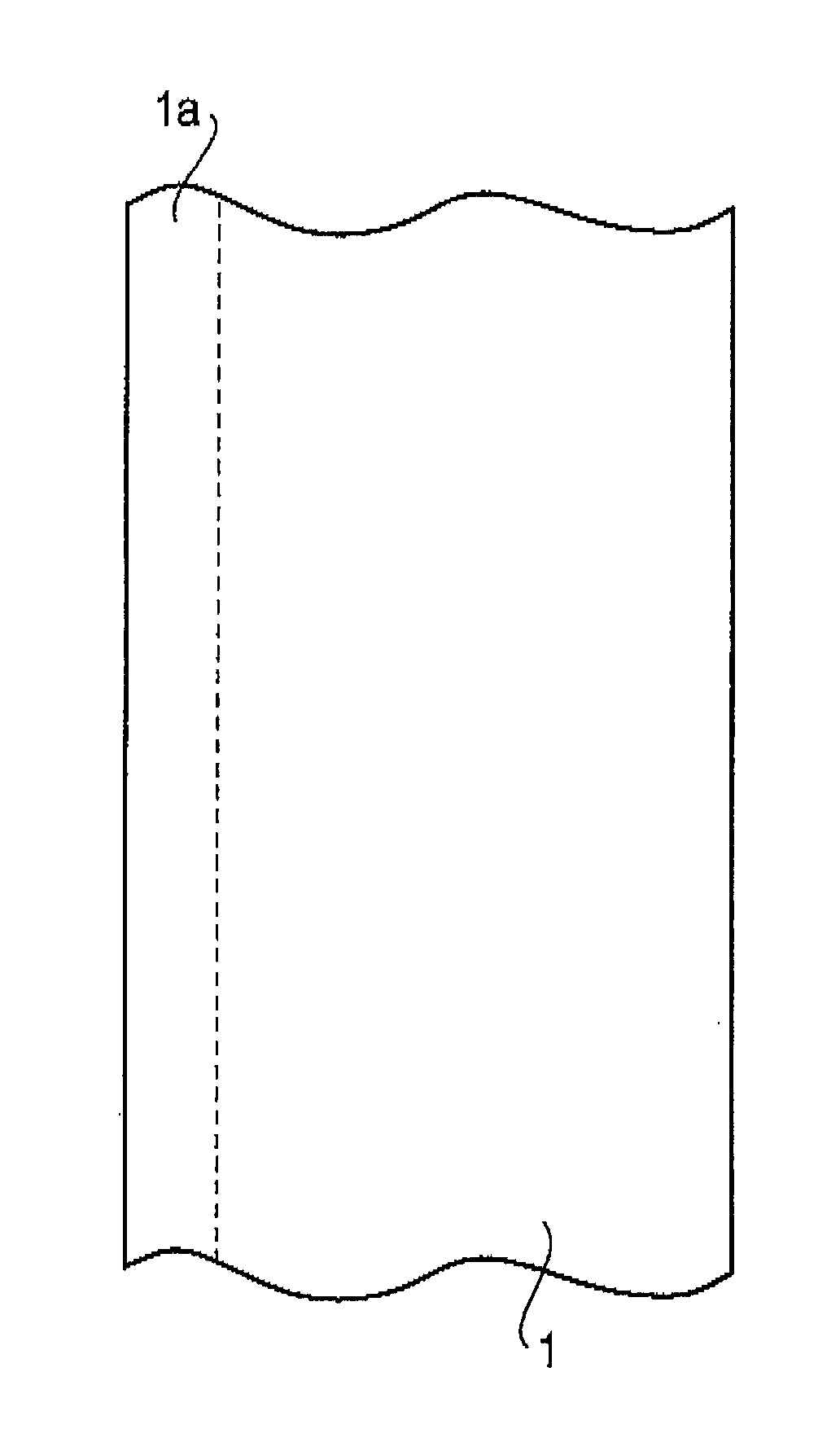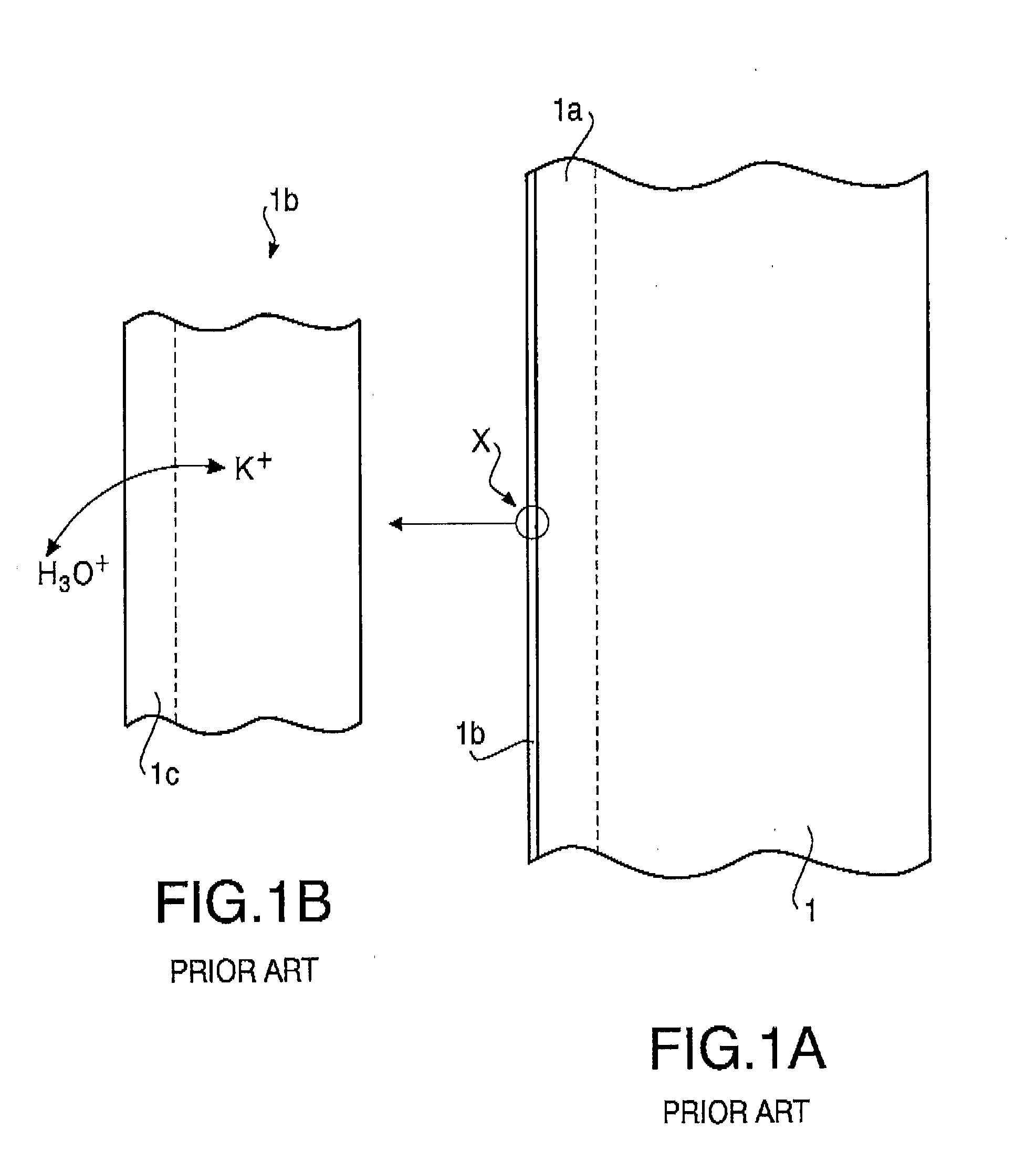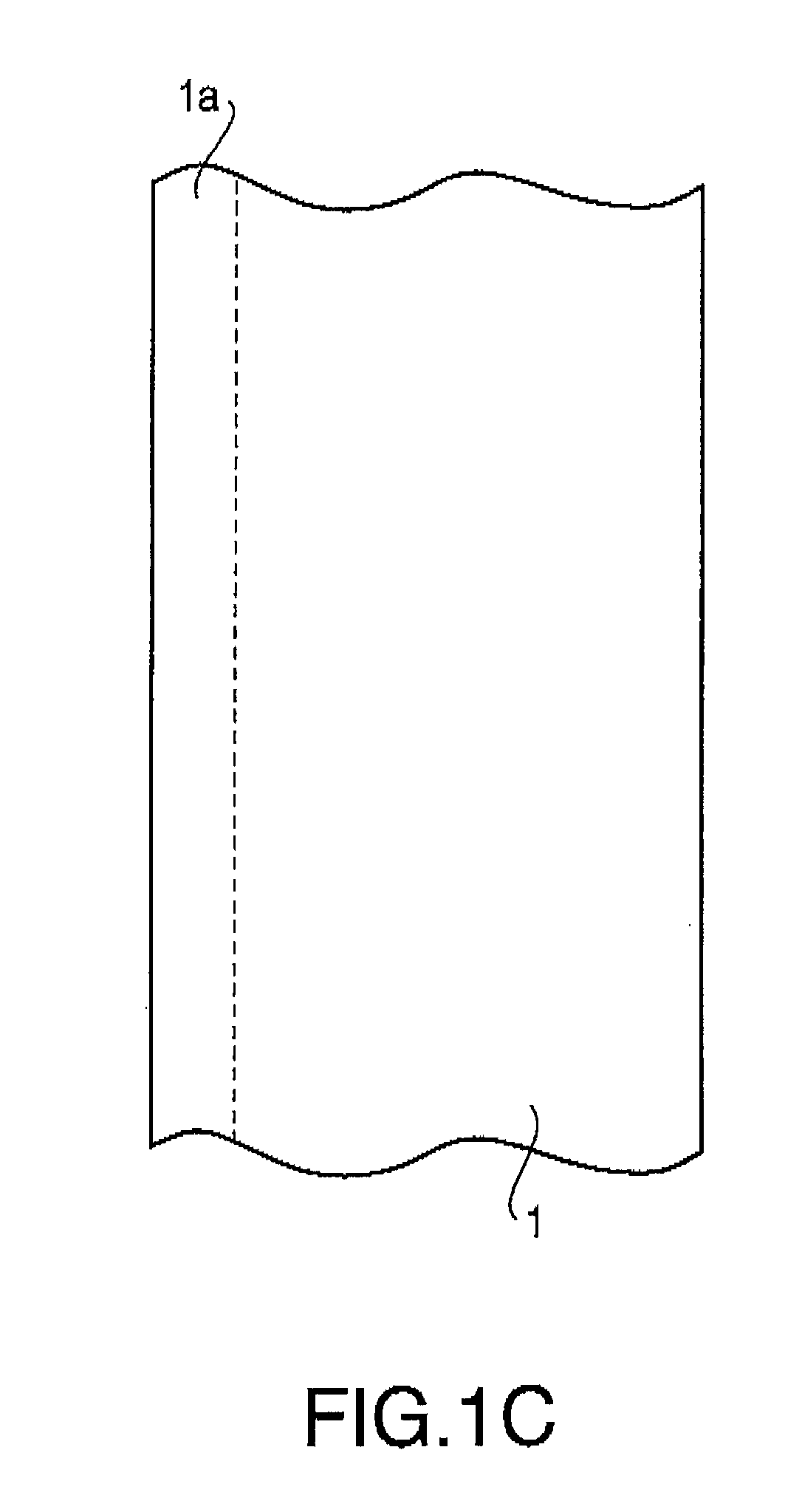Glass substrate and method for manufacturing the same
a technology of glass substrate and manufacturing method, which is applied in the direction of glass making apparatus, manufacturing tools, transportation and packaging, etc., can solve the problems of difficulty in thinning mobile terminal devices, and achieve the effect of enhancing the strength of glass substrate and high strength
- Summary
- Abstract
- Description
- Claims
- Application Information
AI Technical Summary
Benefits of technology
Problems solved by technology
Method used
Image
Examples
example 1
Practical Example 1
[0041]Initially, aluminosilicate glass, which contains 63.5 wt % SiO2, 8.2 wt % Al2O3, 8.0 wt % Li2O, 10.4 wt % Na2O, and 11.9 wt % ZrO2, is formed by the down-draw method into a sheet shape of 80 mm (a long side)×45 mm (a short side)×0.5 mm (thickness).
[0042]Subsequently, the glass substrate is chemically strengthened to be immersed in 360° C. mixture salt bath of 60 wt % KNO3 and 40 wt % NaNO3 for 6 hours. Thereafter, the glass substrate is water-cleaned to remove extraneous material such as molten salt attached thereto. Next, the glass substrate is immersed in 35° C. etching solution of 3 wt % H2SiF6 and moved up and down in the etching solution for 10 minutes. Thereby, the primary surface of the glass substrate is etched by about 1 μm. After that, the glass substrate is cleaned to be immersed in 40° C. cleaning solution of 15 wt % H2SO4 for 5 minutes under an ultrasonic wave of 40 kHz being applied. Thus, the glass substrate of a practical example 1 is manufac...
example 2
Practical Example 2
[0044]A glass substrate, formed into the same sheet shape in the same manner as the practical example 1, is chemically strengthened to be immersed in 360° C. mixture salt bath of 60 wt % KNO3 and 40 wt % NaNO3 for 6 hours. Thereafter, the glass substrate is water-cleaned to remove extraneous material such as molten salt attached thereto. Next, the glass substrate is etched to be showered with 45° C. etching solution of 3 wt % H2SiF6 for 20 minutes. Thereby, the primary surface of the glass substrate is etched by about 2 μm. After that the glass substrate is cleaned to be immersed in 40° C. cleaning solution of 15 wt % H2SO4 for 5 minutes under an ultrasonic wave of 40 kHz being applied. Thus, the glass substrate of a practical example 2 is manufactured. It is noted that the potassium ion concentration in the primary surface of the obtained glass substrate is measured by the WDX to be 2000 ppm. The same strength measurement as the practical example 1 is conducted f...
example 3
Practical Example 3
[0045]A glass substrate, formed into the same sheet shape in the same manner as the practical example 1, is chemically strengthened to be immersed in 360° C. mixture salt bath of 60 wt % KNO3 and 40 wt % NaNO3 for 6 hours. Thereafter, the glass substrate is water-cleaned to remove extraneous material such as molten salt attached thereto. Subsequently, the glass substrate is etched to be immersed in 35° C. etching solution of 6 wt % H2SiF6 for 10 minutes while the etching solution is being circulated by a pump. Thereby, the primary surface of the glass substrate is etched by about 3 μm. After that, the glass substrate is cleaned to be immersed in 40° C. cleaning solution of 15 wt % H2SO4 for 5 minutes under an ultrasonic wave of 40 kHz being applied. Thus, the glass substrate of a practical example 3 is manufactured. It is noted that the potassium ion concentration in the primary surface of the obtained glass substrate is measured by the WDX to be 1500 ppm. The sam...
PUM
| Property | Measurement | Unit |
|---|---|---|
| Fraction | aaaaa | aaaaa |
| Temperature | aaaaa | aaaaa |
| Concentration | aaaaa | aaaaa |
Abstract
Description
Claims
Application Information
 Login to View More
Login to View More - R&D
- Intellectual Property
- Life Sciences
- Materials
- Tech Scout
- Unparalleled Data Quality
- Higher Quality Content
- 60% Fewer Hallucinations
Browse by: Latest US Patents, China's latest patents, Technical Efficacy Thesaurus, Application Domain, Technology Topic, Popular Technical Reports.
© 2025 PatSnap. All rights reserved.Legal|Privacy policy|Modern Slavery Act Transparency Statement|Sitemap|About US| Contact US: help@patsnap.com



